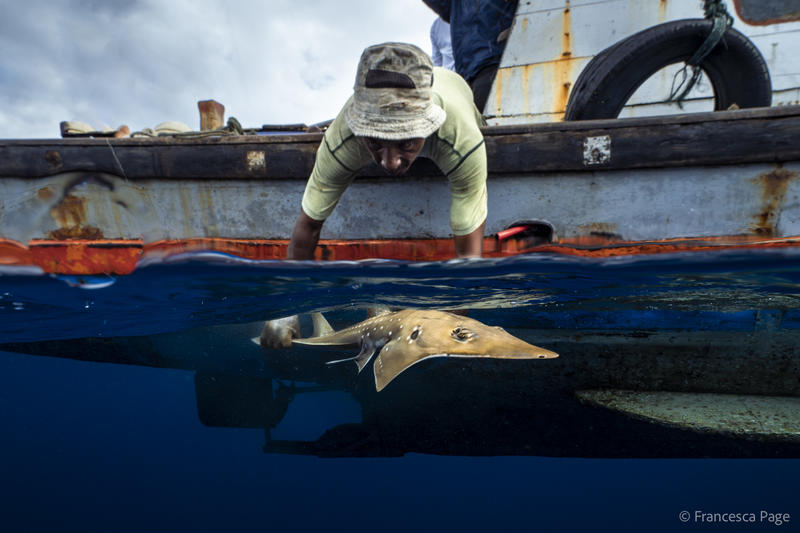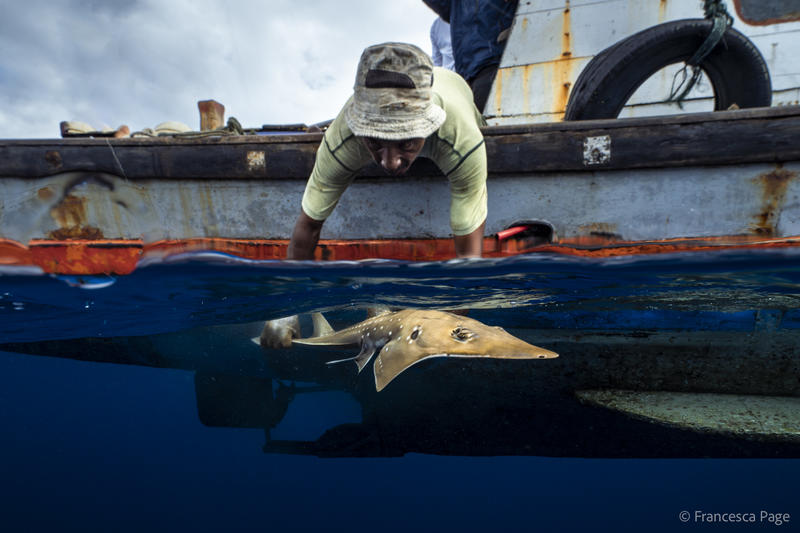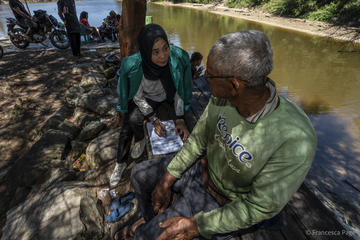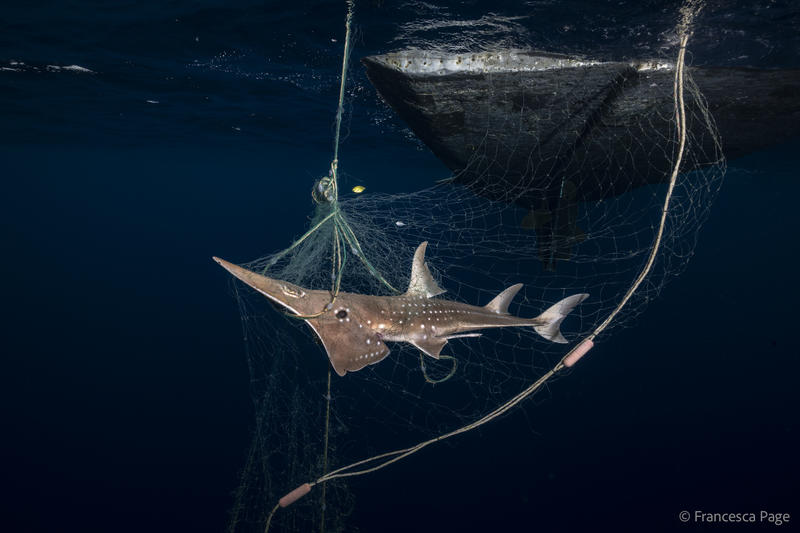University of Oxford
11a Mansfield Rd
OX1 3SZ
UK

A new study has revealed that an incentive programme increased live releases of endangered species caught as bycatch. However, unexpectedly, the overall positive impact was reduced by some vessels increasing catches of these species. The study is the world’s first randomised controlled trial to conclusively assess the effectiveness of an incentive-based marine conservation programme.
Large, long-lived marine animals such as sharks and rays are amongst the world’s most threatened groups, primarily due to overfishing in targeted and bycatch fisheries. In small fisheries, households rely on marine resources for their food and income, creating trade-offs between biodiversity and wellbeing outcomes. Incentives therefore can provide a cost-effective and equitable option for balancing the needs of people and biodiversity. However, incentives can also change behaviour in unexpected ways, which means their impacts need to be rigorously tested before scaling up.
Oxford researchers worked with local NGO Kebersamaan Untuk Lautan (KUL) to evaluate a pay-to-release programme that compensated fishers for safely releasing two Critically Endangered groups of species: hammerhead sharks (Sphyrna) and wedgefish (Rhynchobatus), in small-scale fisheries in Indonesia. Hammerhead sharks and wedgefish are threatened by overfishing and are often caught as bycatch during fishing for other species.
The study evaluated the first 16 months of the programme (May 2022–Aug 2023), which involved 87 vessels randomly split into two groups; one group were eligible to receive compensatory payments for live releases while the other acted as a ‘control’ and were not offered payments. Fishers proved they had safely released hammerheads and wedgefish by taking videos on provided cameras, which needed to show the released fish safely swimming away and out of sight. The compensatory payments were in line with what the fishers could have made by selling the sharks and rays in local markets, based on previous work also conducted by the same Oxford team.
The programme proved highly successful in motivating fishers to release the Critically Endangered species: 71% of wedgefish that were caught were released, whilst 4% of caught hammerheads were released. However, the experimental evaluation revealed that the programme also encouraged some vessels to increase their catches to receive more payments at the expense of conservation goals. When this was taken into account, wedgefish mortality was only 25% lower in the treatment condition relative to the control, while hammerhead mortality was 44% higher.
The results provided critical insights for adapting KUL’s incentive programmes; since the study, KUL have 1) adjusted the amount of compensation offered to fishers, so that it is based on size classes, 2) capped the number of allowable compensated releases per vessel per week, and 3) piloted a new gear swap scheme, to avoid catches of threatened species in the first place. Although no formal analysis has been completed for the second phase, preliminary results look promising. KUL have also continued running the programmes as randomised controlled trials, together with Oxford researchers, with financial support from the UK’s Darwin Initiative.
Lead researcher Dr Hollie Booth said:
“Incentive-based programmes play a critical role in effective and socially just nature conservation. We can’t expect small-scale resource users to bear the majority of the costs of conservation, especially when there are wealthier and more powerful stakeholders causing major negative impacts. However, as our study has shown, incentives must be well designed and robustly evaluated to incentivise the right behaviour and ultimately deliver positive outcomes for nature and people.”
The results demonstrate that even the most careful efforts to design a conservation programme may not account for all types of real-world uncertainties and complexities – and underline the importance of piloting with experimental designs before scaling.
Senior researcher Professor Paul Ferraro (Johns Hopkins University) said: “Pay-to-release schemes for endangered species caught by local fishers are being implemented around the world. Yet these schemes tend to be implemented without anyone asking whether they actually make a difference to the catch of endangered species. It is concerning that so much money continues to be spent on conservation programs without rigorous evaluations of their impacts on biodiversity and socio-economic outcomes.”
Teuku Ridwan, Head of the Department of Marine Affairs and Fisheries of Aceh Jaya Regency said: “This initiative has had a tangible impact on strengthening the livelihoods of small-scale fishers, who form the backbone of coastal life in Aceh Jaya. We hope that the synergy between implementing organisations, fishing communities, traditional leaders, and local government continues to be strengthened to realise marine management that is just, sustainable, and rooted in local wisdom.”
The researchers highlight that taking this approach will ensure that conservation interventions can better contribute to bending the curve on biodiversity loss and delivering the Global Biodiversity Framework’s 2050 vision of ‘living in harmony with nature’.
To read more about this research, published in Science Advances, visit: https://www.science.org/doi/10.1126/sciadv.adr1000





